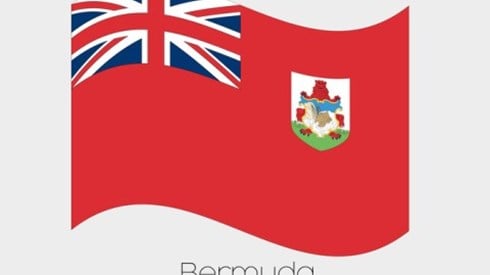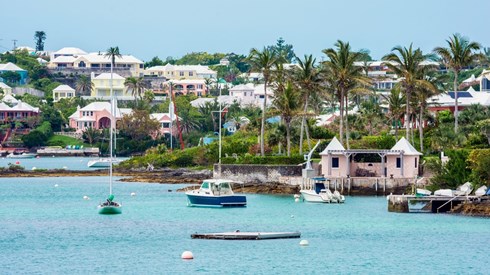BMA Report Provides Detailed Look at Bermuda's Captive Market

November 10, 2021

A recently released report provides a snapshot of the Bermuda captive insurance market, including data on the geography where risks originate, the types of industries with captives in the domicile, and premium by industry.
The BMA Captive Report 2020 from the Bermuda Monetary Authority (BMA), which was released earlier this month, is based on 2019 year-end statutory financial returns submitted to the BMA.
Among other things, the BMA's analysis found that 64 percent of Bermuda captive insurance companies were pure captive structures, 62 percent of the risk assumed in the market originated in North America, 17 percent of Bermuda captives were in runoff, and 17 percent of Bermuda captives have segregated accounts.
The report also notes that while captive insurance companies were challenged by the COVID-19 pandemic, Bermuda-domiciled captives appear to have taken appropriate steps to mitigate the risks.
"Bermuda's captive market is a mature market that has long endured a number of global crises while maintaining Bermuda's position as the leading captive domicile measured by both premiums written and capital to support the business underwritten," the report says. "A review of 2019 data highlights the Bermuda captive market's continued resilience through its profitable underwriting, strong capital, and ability to pay claims. The market is expected to continue to thrive, moving forward incorporating both traditional and emerging risks."
The report says the Bermuda market continues to see interest among both existing and new captive insurance company owners considering maximizing the benefits captive insurance can offer.
The report notes that the COVID-19 pandemic affected captives both directly and indirectly, leading the BMA to issue a COVID-19 Emerging Risks template, which requested information on captive insurance companies' assessment of exposure and governance changes.
"A review of the templates did not reveal a significant negative impact on the market," the report says. "As time has progressed, the impact of the pandemic has continued to decrease because of the effective implementation of mitigation strategies across the market."
The report says that, acting on advice from the BMA, the Bermuda captive insurance market appears to have taken a prudent approach to any reductions in capital during the pandemic, given the ongoing level of uncertainty.
The BMA's report does allow that the pandemic continues to challenge Bermuda captive owners' ability to hold in-person board meetings in Bermuda. The BMA has emphasized the importance of frequent board meetings, the report says, expecting captive owners to continue to hold them virtually when meeting in person isn't practical.
On another front, cyber risk, the report notes that the BMA encourages innovation in the captive insurance market while staying abreast of emerging risks like cyber risks and ransomware. The BMA has previously noted growth in the underwriting of cyber risks in Bermuda-domiciled captives.
"With the introduction of the Insurance Sector Operational Cyber Risk Management Code of Conduct in December 2019, the Authority set out the requirements and standards necessary to comply with the Code, ensuring a cyber resilient, proactive, and prepared market," the report says.
With regard to climate change and sustainability, the report suggests that many organizations are looking to use their captives to manage risks associated with climate change. "Bermuda provides a stable captive market that is well-placed to provide risk management tools for companies wanting to manage climate change-related and other emerging risks alongside traditional risks," the report says.
The report notes that the BMA established an internal task force focused on climate change and sustainability to determine how best to integrate sustainability into its regulatory framework.
"To address climate-related considerations, the Authority may modify supervisory processes and reporting requirements to the extent required in the future," the report says. "Any changes in the captive space will be applied proportionally, with robust consultation with the market and specific to those that are most impacted by this risk."
The Bermuda captive market had more than $25 billion in gross written premiums in 2019, according to the report. In addition to the 62 percent of risk originating in North America and Bermuda, 23 percent originated in Europe, 5 percent in Japan, 3 percent in Central and South America and the Caribbean, 3 percent in the rest of Asia, 3 percent in Africa and the Middle East, and 1 percent from Australia and New Zealand.
Financial institutions were the most frequent parent of Bermuda-domiciled captive insurance companies at 14 percent; followed by automotive, manufacturing, and retail at 12 percent; shipping, transport, and storage at 12 percent; health care at 10 percent; energy, power, and utilities at 9 percent; and professional services at 8 percent.
Of the 14 new captive insurance companies formed in Bermuda in 2019, 30 percent were formed by parent companies in administrative and support services and 21 percent from financial institutions. Half of the year's new captives were pure captives, while 36 percent were group captives.
Financial institutions wrote the largest amount of gross written premium in Bermuda captives in 2019 at 29 percent, followed by shipping, transport, and storage at 13 percent; administrative and support services at 12 percent; professional services at 11 percent; and energy, power, and utilities at 8 percent.
The BMA found that short-tail lines of business represented 58 percent of the business written by Bermuda captives in 2019. Among those short-tail lines, the main lines of business were property and casualty catastrophe at 50 percent; warranty and residual value at 19 percent; marine—protection and indemnity, cargo, hull and liability, and war at 13 percent; and property damage and business interruption at 10 percent.
Among the 42 percent of captive premiums written for long-tail lines of business, the primary lines included workers compensation and employers liability at 23 percent; general liability—public, products, umbrella, and product recall at 21 percent; professional liability—professional indemnity, directors and officers, bankers blanket, and errors and omissions at 18 percent; and motor—auto physical damage and liability at 18 percent.
November 10, 2021




